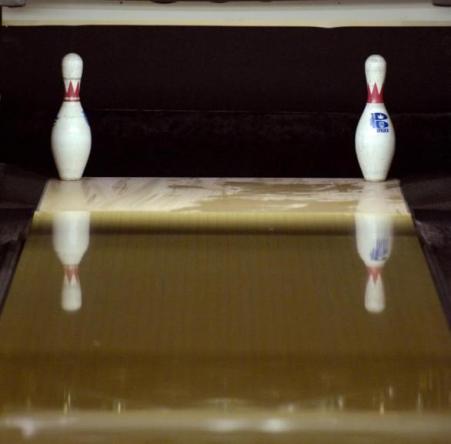Rules of engagement
Rules of engagement
Bowling is pretty simple these days. Put your name into a computer, throw a ball. If you don’t strike on the first shot, you throw another shot and then the computer tabulates the score.
But what happens if you bowl when it’s not your turn? Or if you step over the foul line? And what happens if you are bowling in a league and decide you want to switch bowling hands?
The United States Bowling Congress has been the guardian of bowling’s rules for more than a century. The rules maintain the sport’s integrity and USBC has a team of rules counselors that help interpret and enforce these rules for league and tournaments.
Think you know all the rules? While there are General Playing Rules, there also are rules specific to leagues, tournaments, awards and youth bowlers. Go to BOWL.com/Rules and you can download the entire book of rules.
But for now, let’s take a look at some rules you might not know:
Dancing pins and the 7-10 split If you have bowled enough, you have probably seen a pin get hit and move to a different spot on the deck without falling. Perhaps that 7 pin slid all the way to the edge of the gutter but just didn’t fall. But let’s say the 7 pin slides the other way, and stops at the position of the 8 pin, and the 10 pin also is left standing.
If you have bowled enough, you have probably seen a pin get hit and move to a different spot on the deck without falling. Perhaps that 7 pin slid all the way to the edge of the gutter but just didn’t fall. But let’s say the 7 pin slides the other way, and stops at the position of the 8 pin, and the 10 pin also is left standing.
So, if you pick up this split, did you just pick up the 8-10 split? Well, the rules state that splits are determined by the pin position before delivery, not where they end up after the first delivery. So if you make that spare then you just made the very, very … did we say very? … difficult 7-10 split.
Clean up on lane 4
So the guy bowling ahead of you unleashes a 22-mph fastball that splatters the pins, pushing nine into the pit and leaving one in the gutter, out of the reach of the rake. You know there’s no way you would ever throw a gutter ball on your first shot, so you step to the approach and … promptly throw it in the gutter.
But, good luck for you, the ball hits the pin in the gutter, bounces onto the lane and then strikes! Actually, that’s not good luck since according to Rule 6b - Illegal pinfall, if the ball comes into contact with anything before hitting the pins, the delivery counts but the resulting pinfall does not. So you just got a big zero.
Not so fast
You step up to bowl, throw a strike and then realize you were too quick and bowled out of turn. So you can just put that strike up when it is your turn, right?
Nope. That’s what is called a dead ball, according to Rule 8, Item d, and it’s wiped away like it never happened.
I’m taking my ball and going home
You’re bowling the second game of your three games of league play, and your buddy Dave misses a single-pin spare for the sixth time tonight. Dave decides he’s had enough, packs his gear and leaves after the fourth frame. What happens now?
Well, in addition to questioning the reason you keep Dave on the team, you will have to give Dave a zero in the rest of the frames. In the last game, your team can use Dave’s absentee score, according to Rule 108b.
Right then left is not right
After bowling a not-very-good game during the city tournament, your buddy Dave says he might as well bowl left-handed. The right-handed Dave does start bowling left-handed and actually tosses a strike and a spare.
While perhaps that is a little impressive, the problem is Dave just earned a disqualification. The rules state that once a bowler has rolled his-her first shot, they have to use that hand throughout the tournament unless they are injured and get approval from the tournament manager to continue with the opposite hand.





